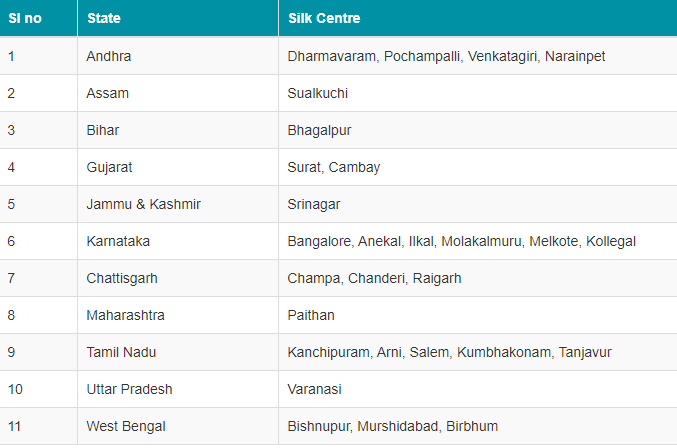Sericulture in India | 12 Mar 2020
Why in News
Cocoon production in Karnataka has picked up to meet the growing demand for indigenous silk.
- Silk imports from China have been badly hit on account of Coronavirus.
Key Points
- Sericulture:
- It is an agro-based industry.
- It involves rearing of silkworms for the production of raw silk, which is the yarn obtained out of cocoons spun by certain species of insects.
- The major activities of sericulture comprise of food-plant cultivation to feed the silkworms which spin silk cocoons and reeling the cocoons for unwinding the silk filament for value-added benefits such as processing and weaving.
- Domesticated silkworm (Bombyx mori) are raised for the purpose of sericulture.
- The Government of India has allocated ₹2161.68 crores for three years i.e. 2017-2020 to its Central Sector Scheme ‘Silk Samagra’ for the development of sericulture in the country.
- Silk Production in India:
- There are five major types of silk of commercial importance, obtained from different species of silkworms. These are Mulberry, Oak Tasar & Tropical Tasar, Muga and Eri.
- Except for mulberry, other non-mulberry varieties of silks are wild silks, known as vanya silks.
- India has the unique distinction of producing all these commercial varieties of silk.
- South India is the leading silk producing area of the country and is also known for its famous silk weaving enclaves like Kancheepuram, Dharmavaram, Arni, etc.

